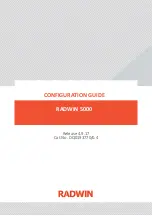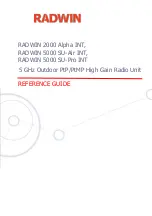
1-10
THEORY OF OPERATION
3.3.6
Battery Charging Through Microphone Jack
A wall-type charging power supply may be connected to the 2.5 mm microphone jack (part of
accessory connector J451). The voltage present at the tip contact (pin 4) is applied to the center
charging contact of the battery via diode D470. Another diode, internal to the battery, applies this
voltage to the (+) battery terminal. Only the recommended charger and battery type should be
charged in this manner.
Different battery types contain internal resistors connected from the BATT_CHARGE contact to
ground, which is routed to the microprocessor as BATT_DETECT. A voltage divider is formed with
R255 producing a DC voltage which is read by microprocessor port PE2 (pin 65). This allows the
software to recognize the battery chemistry being used and adjust the battery gauge for best
accuracy. The value of R255 is chosen so that the voltage at the BATT_CHARGE node (cathode of
D470) is never low enough to turn on the EXT_MIC_PTT sense transistor (part of Q470).
3.3.7
Programming and Flashing Through Microphone Jack
The ring contact on the 2.5 mm microphone jack is used for reading, programming or re-flashing the
radio using CPS. This contact (J471 pin 6) is routed to ports PD0_RXD (data into uP, pin 97) and
PD1_TXD (data out of uP, pin 98). Transistor Q410 isolates the input and output functions by
allowing PD1 to pull the line low, but does not affect incoming data from being read by port PD0.
To re-flash the radio (overwrite the software in the Flash ROM with new software), the radio must
power up in the boot mode. This is accomplished by using a flash adapter accessory, which
provides SCI communication with the programming ring contact (J471 pin 6) and also allows a
negative voltage (negative 9 volts dc via a 1K resistor) to be applied to the tip contact (J471 pin 4).
This voltage is sufficient to turn on the base-emitter junction (pins 1 and 2) of Q472 via L471, D471,
VR472 and R471. Pin 6 of Q472 goes high, turning on Q471 (pins 3 and 4) and pulling the
BOOT_ENA line (ports MODA and MODB of the microprocessor) low. Cycling power generates a
reset which causes the radio to boot in the flash mode.
Summary of Contents for CP 140
Page 1: ...Commercial Series CP140 CP160 CP180 Portable Radios Detailed Service Manual 6866550D20 O ...
Page 2: ...ii ...
Page 4: ...iv ...
Page 12: ...viii ...
Page 28: ...iv ...
Page 40: ...1 12 THEORY OF OPERATION ...
Page 48: ...2 8 TROUBLESHOOTING TABLES ...
Page 50: ...3 2 CONTROLLER KEYPAD SCHEMATICS ...
Page 58: ...3 10 Keypad Board Parts List 8466565A01 O ...
Page 62: ...iv ...
Page 66: ...1 4 MODEL CHART AND TECHNICAL SPECIFICATIONS ...
Page 90: ...3 16 TROUBLESHOOTING TABLES ...
Page 92: ...4 2 VHF PCB SCHEMATICS PARTS LISTS ...
Page 108: ...iv ...
Page 112: ...1 4 MODEL CHART AND TECHNICAL SPECIFICATIONS ...
Page 136: ...3 16 TROUBLESHOOTING TABLES ...
Page 138: ...4 2 UHF1 PCB SCHEMATICS PARTS LISTS ...
Page 154: ...iv ...
Page 158: ...1 4 MODEL CHART AND TECHNICAL SPECIFICATIONS ...
Page 182: ...3 16 TROUBLESHOOTING TABLES ...
Page 184: ...4 2 UHF2 PCB SCHEMATICS PARTS LISTS ...
Page 200: ...iv ...
Page 204: ...1 4 MODEL CHART AND TECHNICAL SPECIFICATIONS ...
Page 228: ...3 16 TROUBLESHOOTING TABLES ...
















































